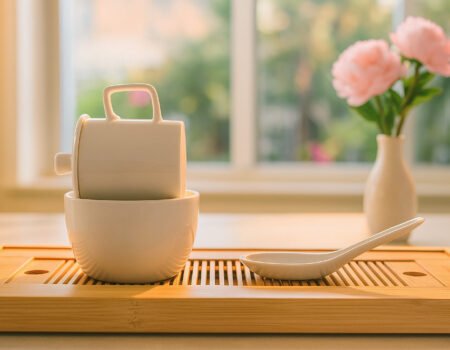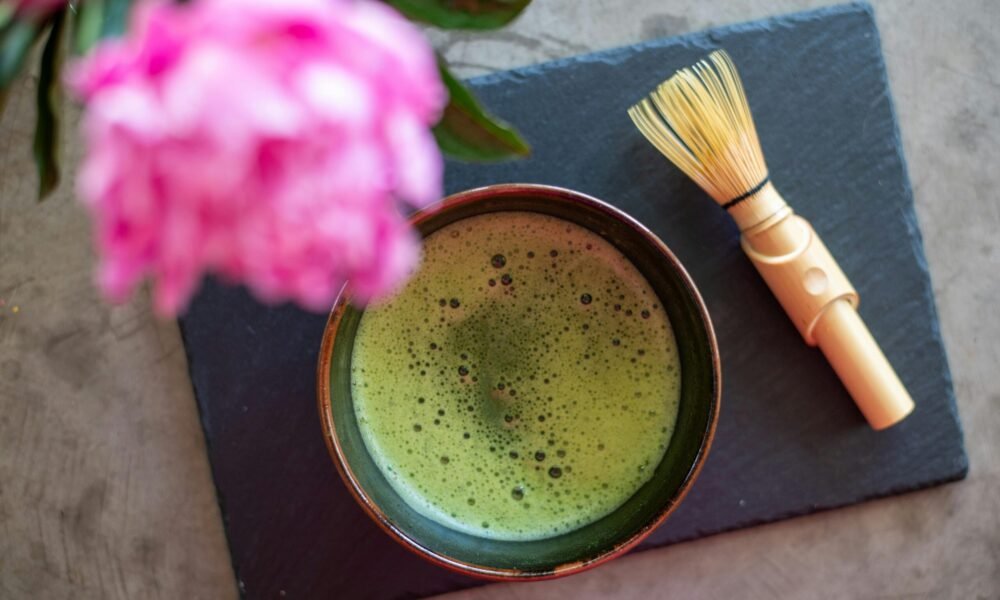
Top Quality Matcha Whisks: Authentic Bamboo Chasen for Japanese Tea in Kyoto
Index
Index
Making perfect matcha tea often fails because of poor quality whisks that break easily or don’t create the right foam. A traditional bamboo chasen has been the essential tool for Japanese tea ceremonies for over 500 years.
In this guide, we’ll explore how to choose authentic matcha whisks from Kyoto that deliver the perfect frothy texture every time. Your path to matcha mastery starts here.
Key Takeaways
- Authentic bamboo chasen whisks have been essential tools in Japanese tea ceremonies for over 500 years, with most being handcrafted in Takayama, Japan.
- Matcha whisks come in different tine counts (80, 100, and 120 prongs), with higher counts creating finer bubbles and smoother foam for ceremonial matcha.
- Proper care extends your chasen’s life. Rinse with warm water after each use, avoid soap, and dry on a kusenaoshi (whisk holder) to maintain its shape.
- Always soak your bamboo whisk in warm water for 1-2 minutes before use. This softens the tines and helps create better froth in your matcha.
- The traditional whisking technique uses a quick “W” motion for 15-20 seconds to create the perfect frothy texture that releases matcha’s full flavor.
Understanding the Matcha Whisk (Chasen)
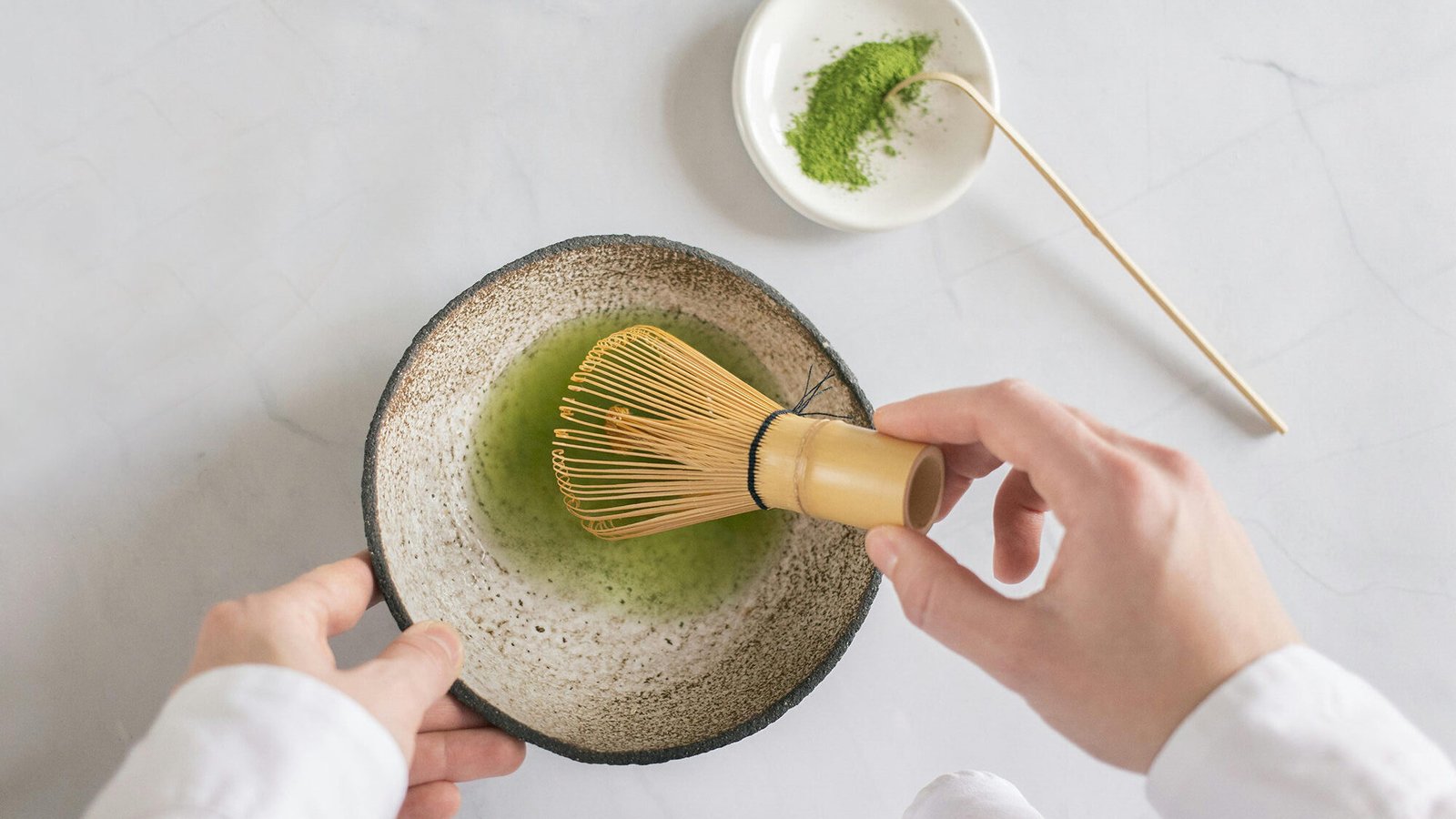
The bamboo chasen stands as the heart of matcha preparation, transforming fine powder into a frothy delight through skilled whisking motions. This traditional Japanese tool, crafted from a single piece of bamboo, features delicate tines that create the perfect texture for your matcha tea.
Defining the Chasen and its Essential Role
A chasen is a traditional bamboo whisk crafted specifically for preparing matcha in Japanese tea ceremonies. This handmade tool features multiple thin tines carved from a single piece of bamboo, designed to mix matcha powder with water quickly and thoroughly.
Each bamboo matcha whisk serves a crucial purpose: it aerates the green tea powder, creating a smooth, frothy texture while releasing the full aroma of the tea. Most tea experts value the chasen because its flexible prongs allow for efficient mixing without damaging the delicate tea particles.
Japanese craftsmen spend several days making each whisk, showing deep respect for this essential utensil. The chasen’s design helps prevent clumping and creates the perfect consistency for both usucha (thin tea) and koicha (thick tea) varieties.
Unlike metal whisks or electric frothers, a proper bamboo chasen preserves the authentic matcha experience while producing the ideal texture. This traditional tool remains irreplaceable in tea ceremonies, where its movement in an “M” shape prevents bitterness and enhances the tea’s natural qualities.
The Significance of Bamboo in Chasen Construction
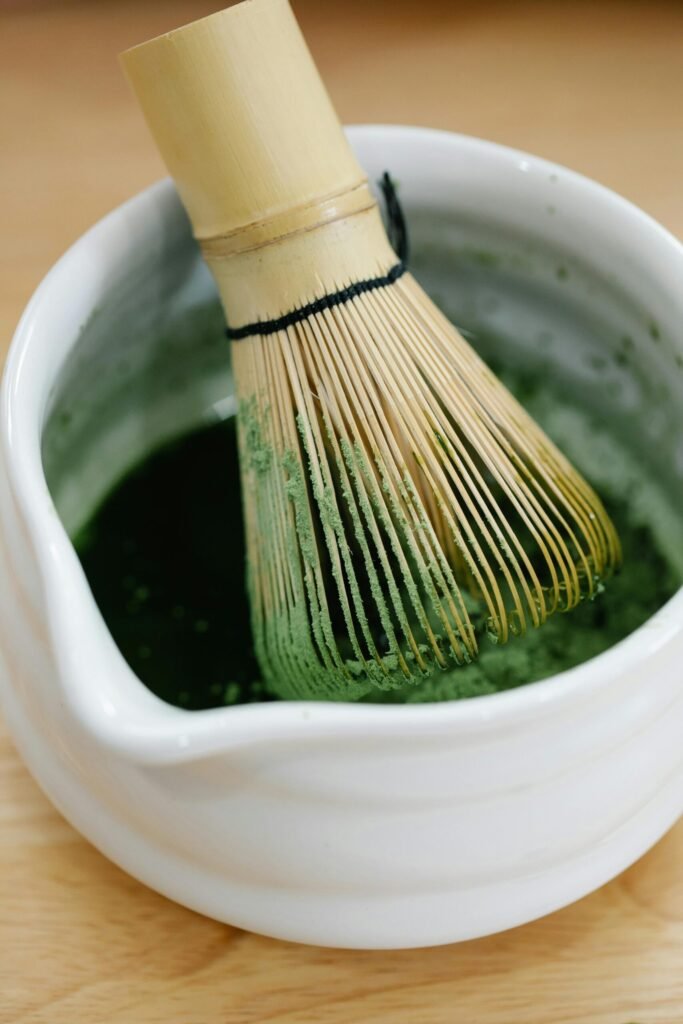
Bamboo stands as the perfect material for authentic matcha whisks due to its unique properties. Master artisans in Takayama, Japan have crafted chasen from local bamboo for over 500 years, maintaining an eight-step process that requires great skill.
This special bamboo grows with great care, creating whisks with superior flexibility and strength. The natural fibers allow craftsmen to split the bamboo into the thin tines needed for proper matcha frothing while maintaining durability during use.
The quality of bamboo directly impacts how well your matcha froths in the chawan (tea bowl). Takayama bamboo offers the ideal balance of stiffness and flexibility needed for the traditional Japanese tea ceremony.
Only about twelve master chasen makers remain in this region, each preserving family techniques passed through generations. These artisans reject machinery and chemical treatments, instead relying on hand tools to transform raw bamboo into functional art.
The resulting whisks create the perfect microfoam that releases matcha’s full flavor profile and antioxidant benefits.
Key Characteristics of a Matcha Whisk
A quality matcha whisk shows clear signs of expert craftsmanship in its bamboo tines and overall structure. The bamboo chasen’s design affects how well it creates the perfect froth in your tea bowl.
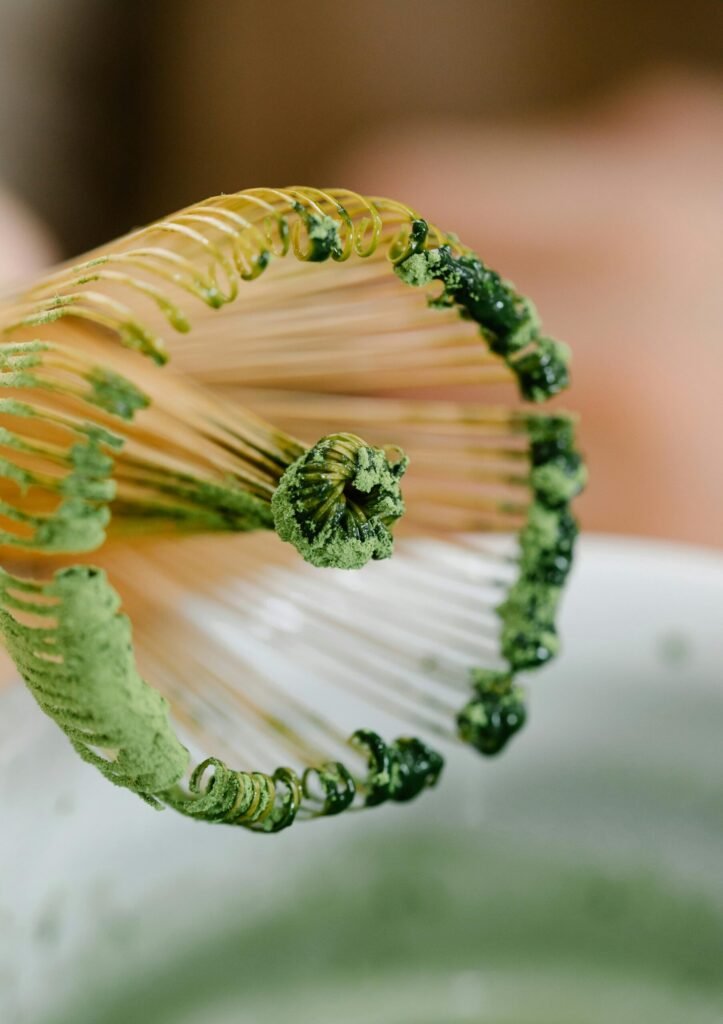
The Importance of Tine Count (80, 100, 120)
Tine count plays a crucial role in your matcha experience. The bamboo chasen comes in three main varieties: 80, 100, and 120 prongs. Each count creates a distinct texture and affects how flavors blend in your tea.
The 80-prong whisk produces coarser froth that works great for stronger flavors and matcha lattes. For daily drinking, a 100-prong chasen offers the perfect balance with smoother froth and even flavor distribution.
High-quality ceremonial matcha demands special attention to tine selection. Tea masters often choose 100 or 120-prong whisks for premium grades to highlight complex flavors. The 120-prong chasen creates the most velvety, fine froth possible, making it ideal for formal Japanese tea ceremonies.
Your whisk choice affects not just the texture but also how you taste subtle flavor notes in your bowl of matcha. Many craftsmen in Japan still handcraft these whisks using traditional methods passed down through generations.
How Tine Count Affects Matcha Froth
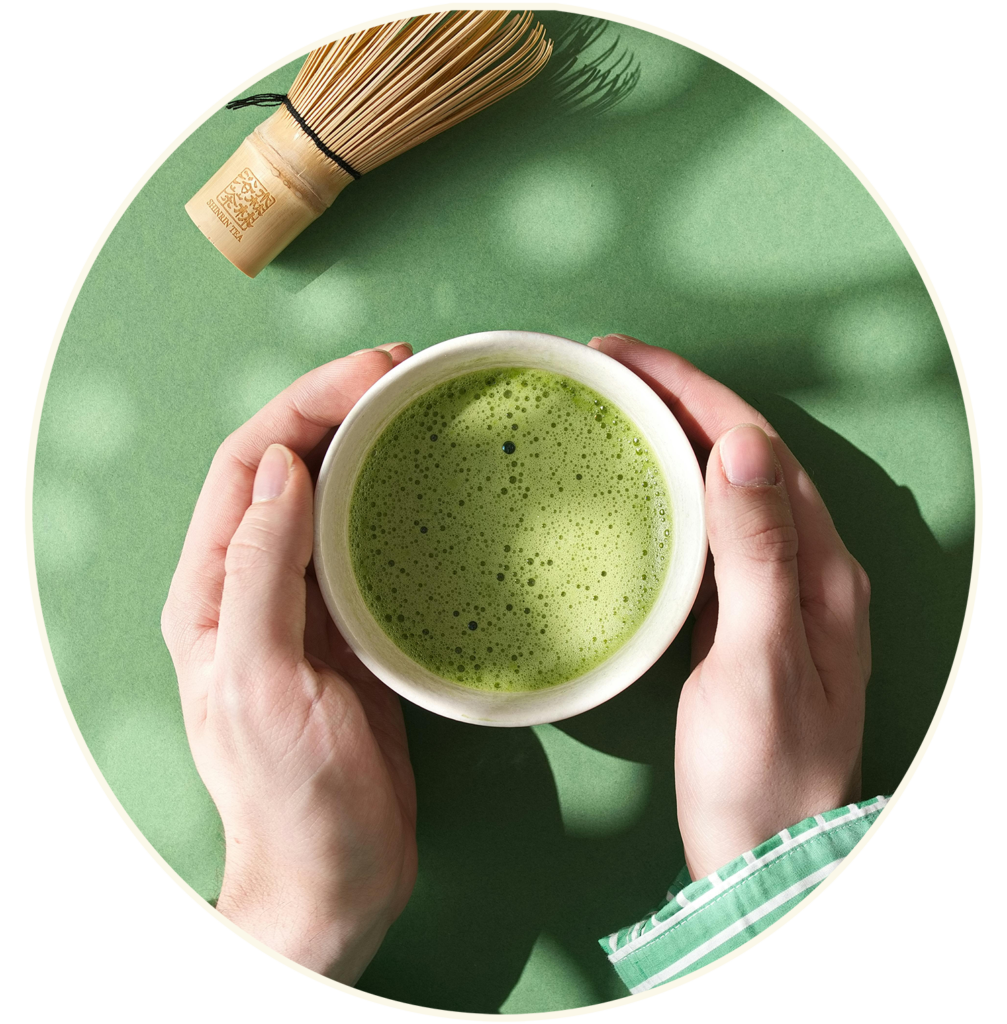
The number of tines on your bamboo chasen directly impacts the quality of matcha froth. A higher tine count creates more contact points with the tea, producing finer bubbles and a smoother, creamier foam.
Matcha whisks with 100-120 tines excel at creating that perfect frothy layer prized in usucha (thin matcha). These premium whisks break up clumps more effectively and distribute the powder evenly throughout the water.
Fewer tines offer different benefits for specific matcha preparations. Whisks with 32-48 tines (Araho and Charaho styles) provide greater strength and durability, making them ideal for koicha, the thicker matcha variety.
The Kazuho style with 64-72 tines strikes a balance between froth quality and sturdiness. Many tea masters select their chasen based on the specific tea ceremony they plan to perform, considering both practical function and cultural significance.
The Chasen in the Japanese Tea Ceremony
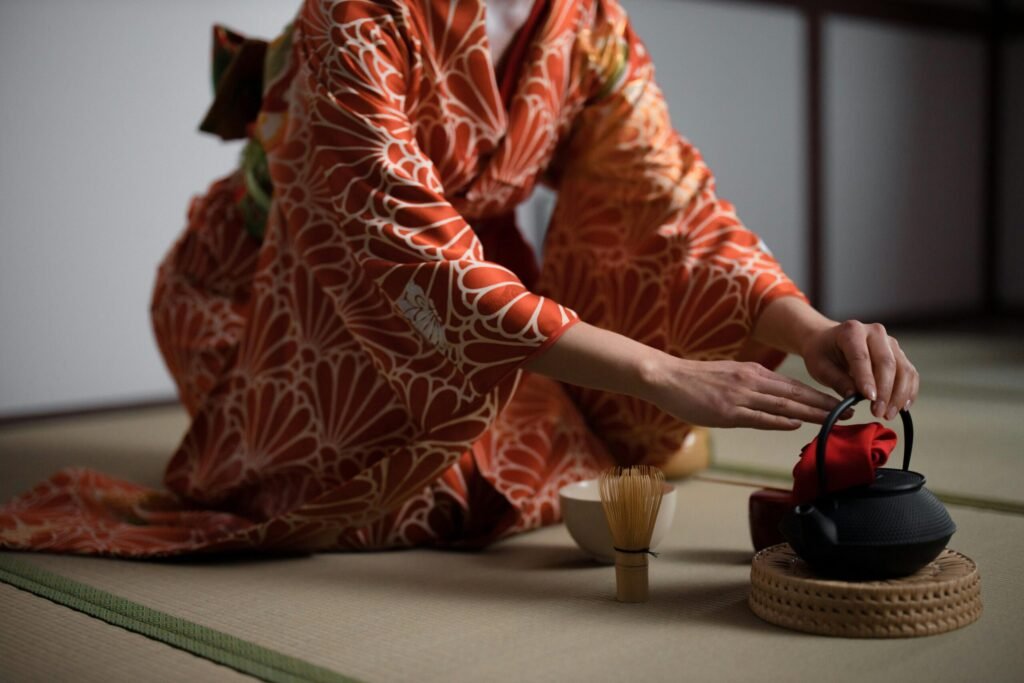
The chasen acts as the heart of Japanese tea ceremonies, turning fine matcha powder into a frothy, vibrant drink through specific whisking motions. In Kyoto’s traditional tea houses, masters demonstrate how the bamboo whisk creates not just a beverage but a moment of mindfulness that connects guests to centuries of tea culture.
Traditional Whisking Technique for Matcha
Matcha whisking stands as a cornerstone of Japanese tea culture, refined over centuries to create the perfect frothy cup. Mastering this technique requires practice and attention to detail, but yields a smooth, creamy matcha that delights the senses.
Matcha Preparation Guide
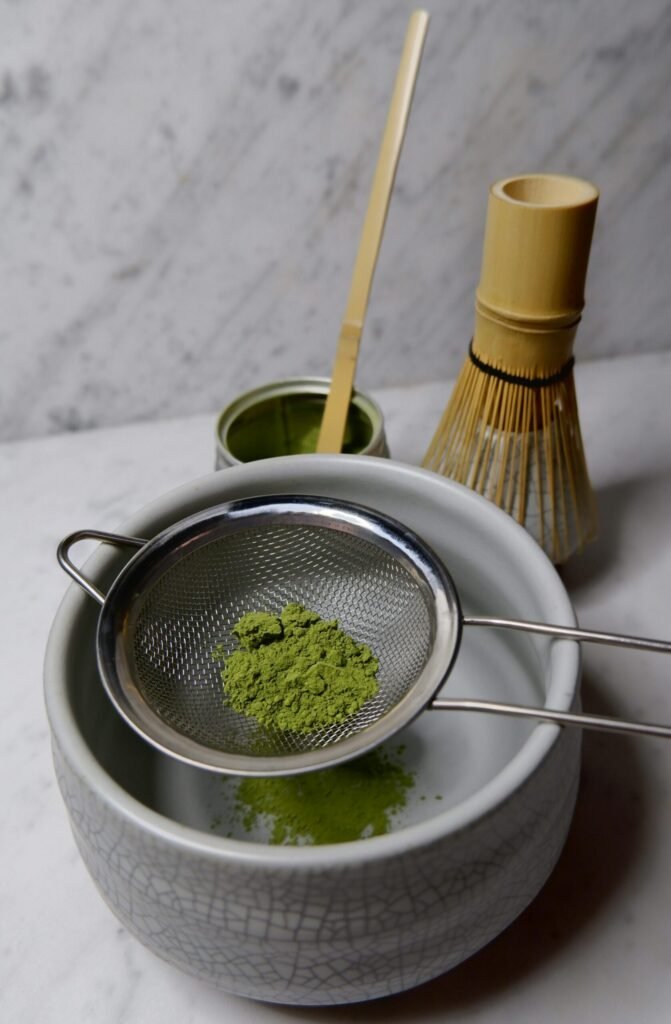
Initial Setup and Preparation
- Sift your matcha powder into the tea bowl to remove any clumps before adding water
- Pour about 2 ounces of hot water (175°F / 79° C) into your matcha bowl with the powder
- Soften your bamboo whisk first by soaking it in warm water for 10-15 seconds before use
Whisking Technique and Motion
- Hold your bamboo chasen with your thumb and first three fingers, keeping a relaxed but firm grip
- Position the whisk so the tips of the tines touch the bottom of the bowl at the start
- Start whisking in a zigzag “W” motion across the bowl, moving your wrist quickly rather than your entire arm
- Apply gentle pressure as you whisk to break up any remaining clumps of matcha powder
- Create a rhythm with your whisking motion to produce tiny bubbles rather than large ones
- Whisk briskly for about 15-20 seconds until a layer of froth forms on the surface
Finishing and Maintenance
- Lift the chasen slowly from the surface once froth appears, avoiding disruption of the foam
- Finish with a few gentle strokes in the center to smooth the surface of your matcha
- Clean your 80-pronged whisk immediately after use to maintain its quality and extend its lifespan
Cultural and Symbolic Meaning
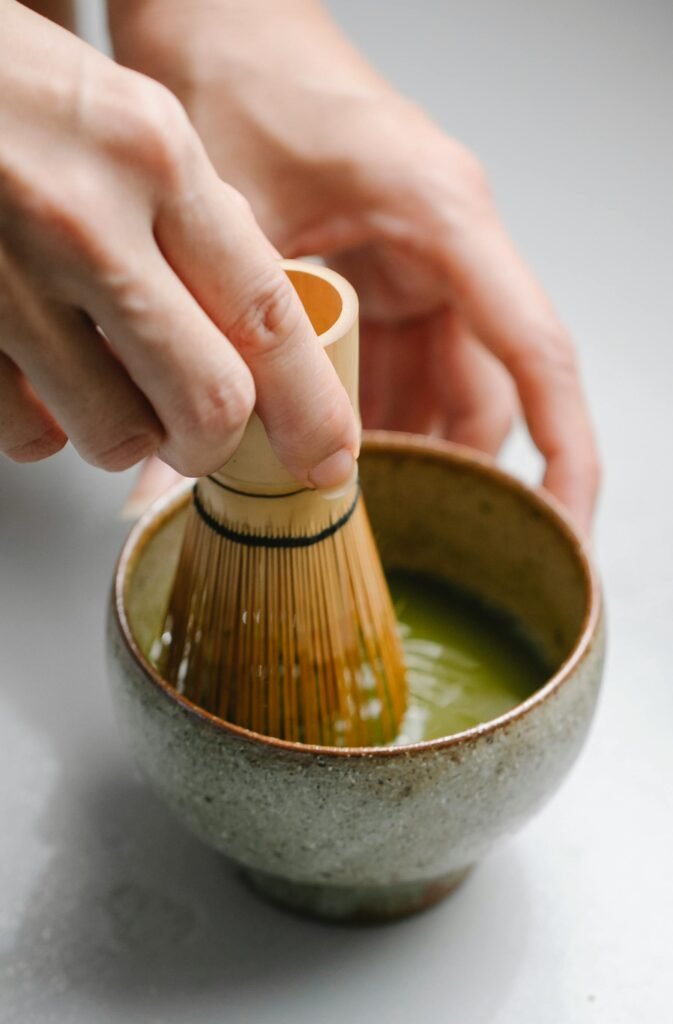
The bamboo chasen holds deep meaning in Japanese tea traditions beyond its practical use. This handcrafted tool represents harmony and respect within the tea ceremony, dating back centuries in Japanese culture.
Skilled artisans create each whisk with precision, reflecting regional craftsmanship differences across Japan. The chasen’s bamboo material symbolizes purity and strength, essential values in the tea ceremony’s philosophy.
Tea ceremonies using the chasen connect participants to Japan’s cultural heritage. The rhythmic whisking motion creates not just frothy matcha but also a moment of mindfulness and appreciation.
Many tea masters from the Urasenke school teach that proper chasen use shows reverence for both the tea and fellow participants. This simple bamboo tool transforms green tea preparation into a meaningful ritual that honors tradition while creating antioxidant-rich matcha.
Essential Care for Your Matcha Whisk
Proper care extends the life of your bamboo chasen and keeps your matcha tasting fresh. A clean, well-maintained whisk creates better froth and prevents mold growth that could ruin your tea experience.
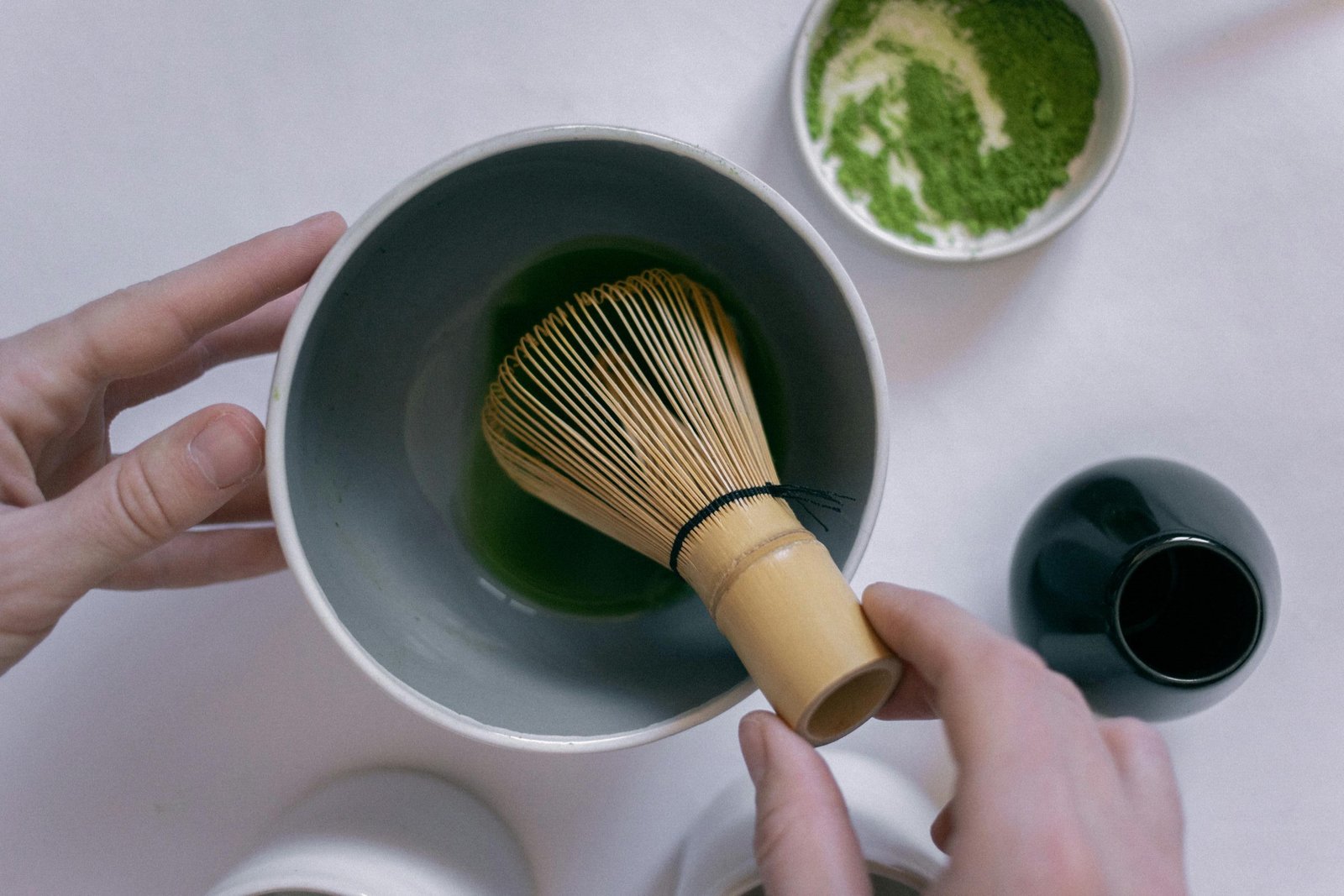
Cleaning and Drying Practices
Proper care of your bamboo chasen extends its life and maintains its whisking quality. Your matcha whisk deserves attention after each use to prevent mold growth and preserve its delicate tines.
Chasen Care and Maintenance
Daily Cleaning Routine
- Rinse your chasen under warm running water right after use to remove matcha residue. Hot water can damage the bamboo material, so stick with warm temperatures
- Avoid soap or detergents as they can leave residue and affect the taste of your matcha. Clean water works perfectly for daily maintenance of your Japanese chasen
- Gently shake excess water from your whisk after rinsing. Vigorous shaking might damage the tines or alter their curvature
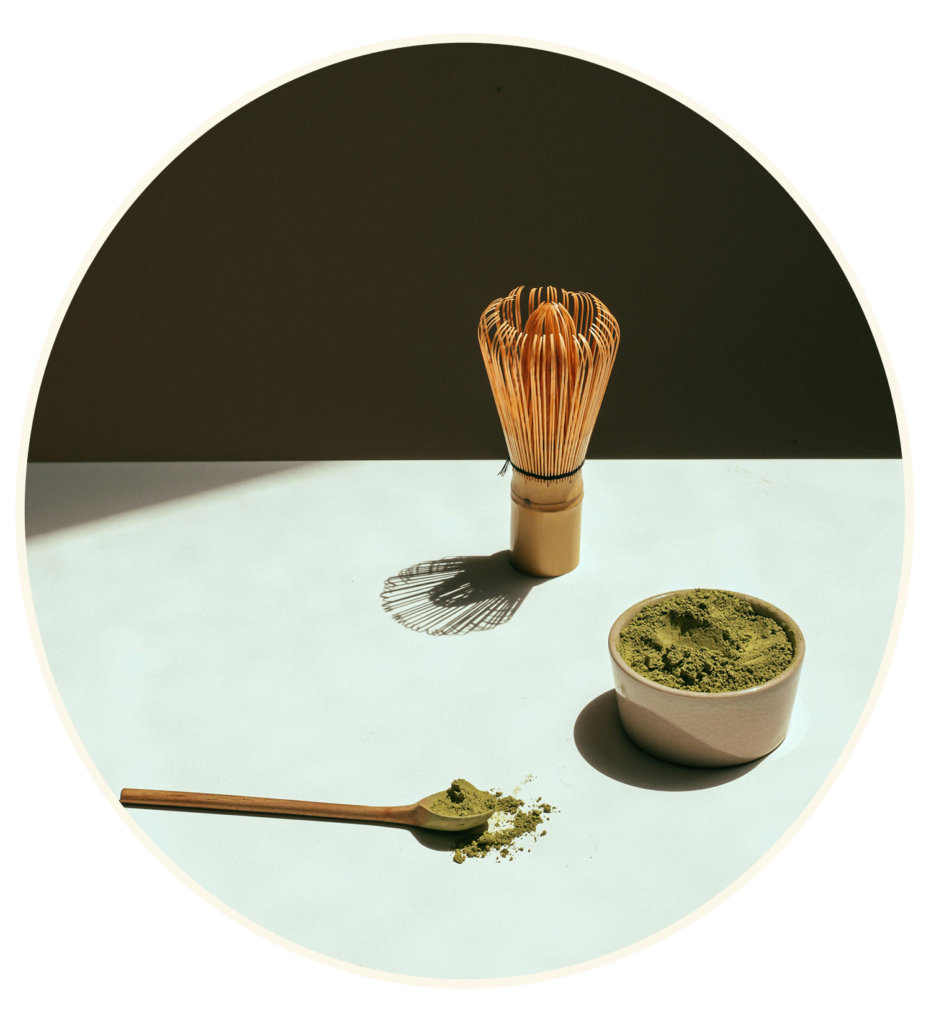
Proper Drying and Storage
- Place your wet chasen on a whisk holder (kusenaoshi) to air dry completely. This special stand maintains the whisk’s shape while allowing air circulation
- Store your dry matcha whisk upright rather than in its original container. Proper air flow prevents moisture buildup that can damage the bamboo
- Keep your matcha set in a dry location away from direct sunlight. Bamboo can warp or crack when exposed to heat or dramatic temperature changes
Initial Preparation and Long-Term Care
- Soak a new chasen in warm water for 1-2 minutes before its first use. This initial soaking softens the bamboo tines and prepares them for whisking
- Check your whisk regularly for signs of mold or discoloration. Replace your chasen if you notice any growth as it might affect your tea quality.
Preparing the Chasen for Use (Soaking)
Proper preparation of your bamboo matcha whisk ensures both its longevity and optimal performance. Soaking your chasen before whisking matcha creates a better froth and protects the delicate bamboo tines.
Chasen Soaking Guide
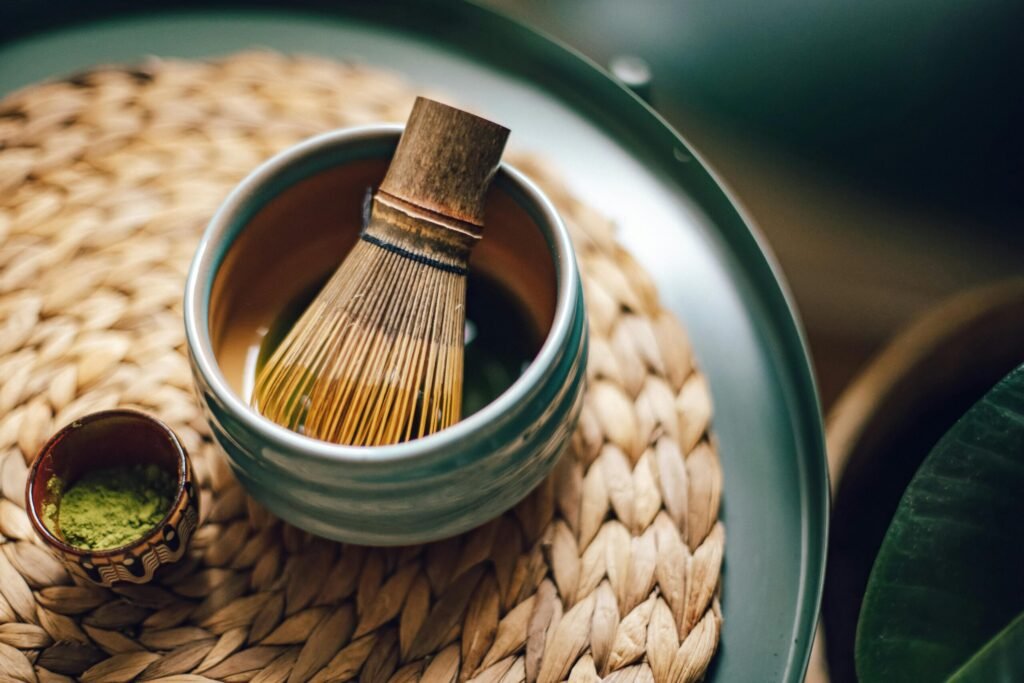
Soaking Process and Technique
- Fill a bowl with hot water about 2-3 inches deep for soaking your matcha chasen
- Place the whisk tine-side down in the water and let it soak for about 2 minutes before use
- Water temperature matters – use hot but not boiling water to avoid damaging the natural bamboo material
- Gentle swirling of the whisk in water helps remove any dust or bamboo particles before first use
- After soaking, shake excess water from the whisk before using it to prepare your matcha
Benefits of Pre-Soaking
- Soaking softens the bamboo tines, making them more flexible and less likely to break during whisking
- The moisture from soaking helps the chasen create a finer, more consistent froth in your matcha tea
- This pre-whisking ritual also warms your bowl, an important step in traditional Japanese tea preparation
- Regular soaking extends the life of your chasen, especially for whisks made in Japan from quality grown bamboo
Traditional Practice
- This practice honors the traditional care methods used for centuries in Kyoto and other Japanese tea regions.
Using a Kusenaoshi (Whisk Holder)
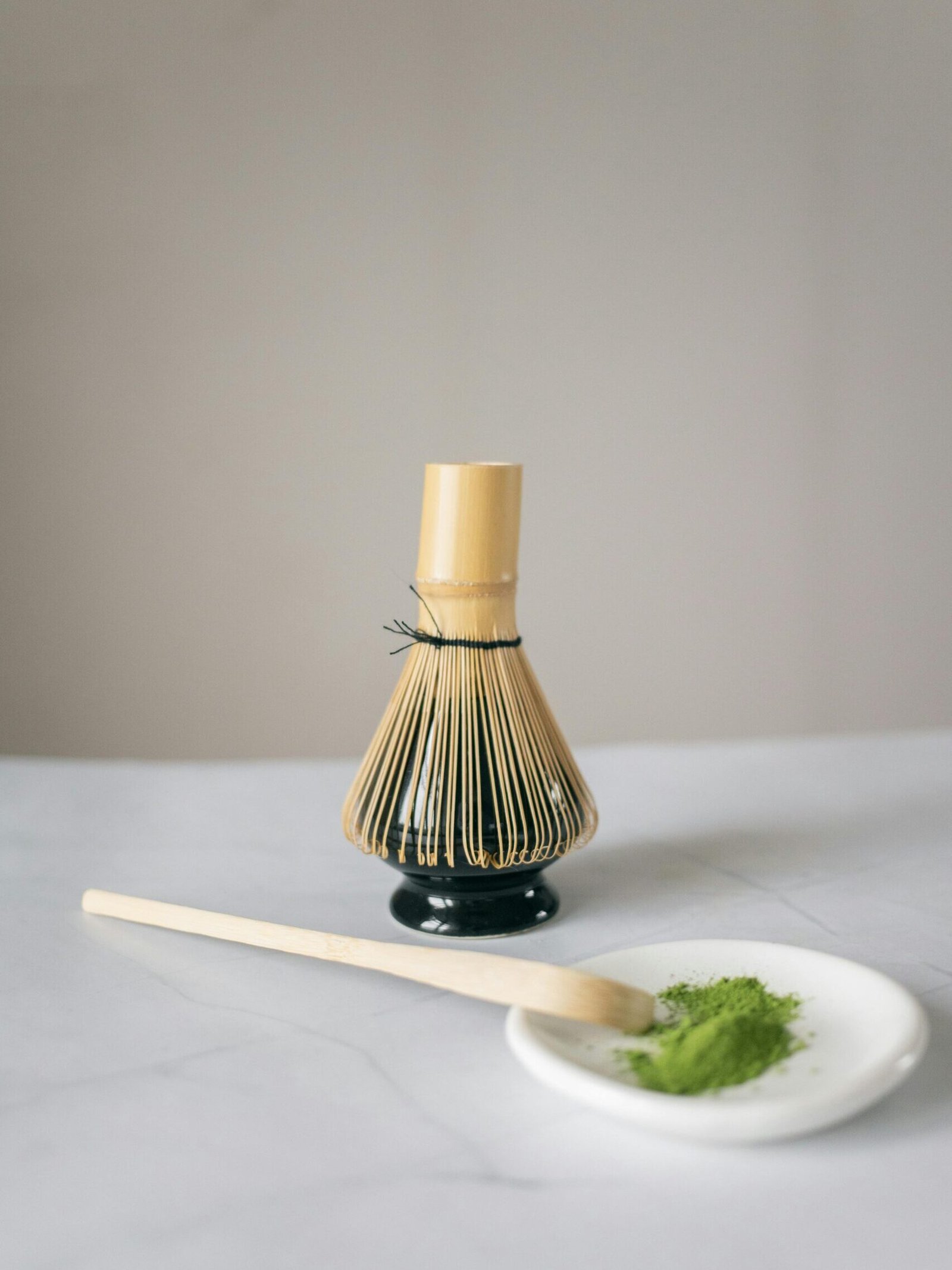
After soaking your chasen, proper storage becomes vital for its longevity. A kusenaoshi serves as an essential tool for matcha enthusiasts who want to maintain their bamboo whisks in perfect condition.
Kusenaoshi (Whisk Stand) Guide
Purpose and Function
- The kusenaoshi reshapes and maintains the tines of your matcha bamboo whisk when they become misaligned or bent
- You can restore splayed or flattened tines by gently pressing the whisk onto the kusenaoshi and rotating it slightly
- The shape of the kusenaoshi mimics the curve needed for optimal froth creation when making matcha
- Regular use of a whisk stand extends the life of your chasen by keeping its shape intact between tea ceremonies
Proper Usage and Care
- This specialized stand should not be used for long-term storage of your chasen despite its holder-like appearance
- Tea masters place their chasen on the kusenaoshi after cleaning to help the tines dry evenly and prevent mold growth
- The kusenaoshi works best with a completely clean whisk free from matcha residue
Traditional Practice and Options
- Traditional Japanese tea ceremonies always include proper whisk care with a kusenaoshi as part of the ritual
- Many tea shops in Kyoto sell kusenaoshi made from bamboo, ceramic, or wood to match your tea ceremony tools
- Matcha deserves proper tools, and the kusenaoshi ensures your whisk maintains its ability to create the perfect froth.
Conclusion
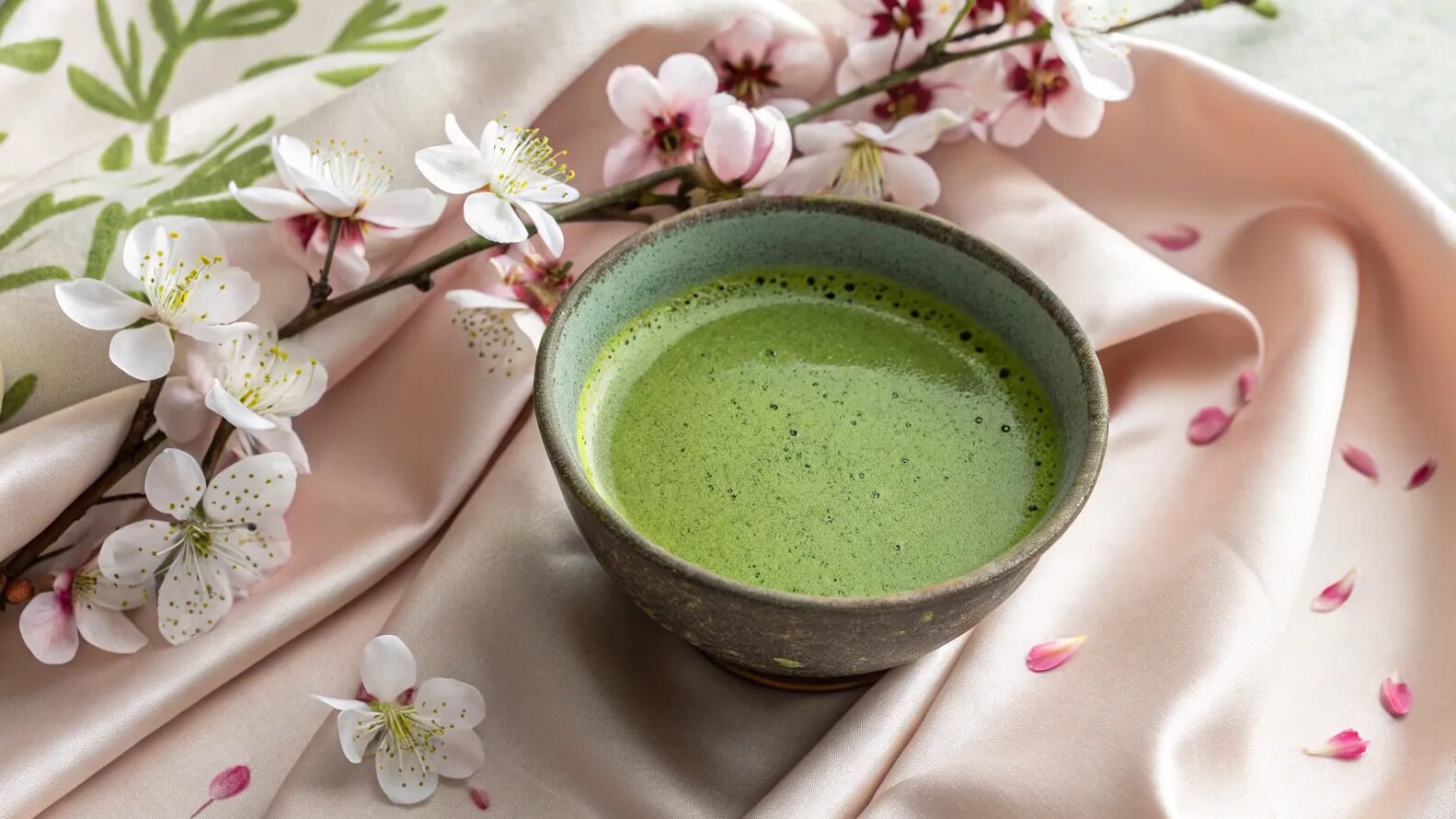
A quality bamboo chasen stands at the heart of authentic matcha preparation. These handcrafted whisks transform simple powdered tea into a frothy, smooth beverage through centuries-old techniques.
Proper care extends your chasen’s life while honoring the Japanese artisans who dedicate their lives to this craft. Whether you use your whisk for daily matcha or formal tea ceremonies, its bamboo tines create the perfect foam that no metal frother can match.
Your journey with matcha deepens when you appreciate the chasen not just as a tool, but as a living connection to tea traditions that span generations.
FAQs
1. What is a chasen and why is it important for making matcha?
A chasen is a traditional tea whisk made of bamboo that’s used to whisk matcha powder with hot water. It creates the perfect frothy texture that milk frothers can’t match, making it essential for authentic Japanese tea preparation.
2. How are authentic bamboo chasen made in Japan?
Authentic chasen are made by skilled artisans in Japan, particularly in Kyoto. They split a single piece of bamboo into many fine tines, creating a tool that perfectly aerates matcha. The raw material selection and craftsmanship by masters like Yuwa Takayama set genuine Japanese whisks apart from mass-produced alternatives made in China.
3. How should I care for my matcha whisk?
Rinse your whisk with warm water before use, but never use soap. After whisking, clean it gently and let it air dry on a whisk holder. Proper storage prevents mold and extends the life of your chasen.
4. What health benefits does matcha offer compared to other green teas?
Matcha boasts exceptional antioxidant capacity with high ORAC values. It contains more EGCG and polyphenols than regular green teas, which help fight oxidative damage. The caffeine in matcha also provides sustained alertness without the crash of coffee.
5. What other tools do I need besides a chasen to prepare traditional matcha?
You’ll need a chashaku (bamboo scoop) to measure the proper amount of matcha powder. Traditional preparation also requires a matcha bowl and a fine sieve. These tools work together with your chasen for the perfect cup.
6. How long will a quality bamboo chasen last with proper care?
A high-quality chasen typically lasts 6-12 months with regular use. The tines will gradually wear down from whisking against the bowl. Many tea enthusiasts keep a second whisk as backup when their first whisk begins to show signs of wear.
References
- https://ippodotea.com/blogs/ippodo-tea-blog/all-about-the-chasen?srsltid=AfmBOoqcGHDN_FVU8RbyvWSfAGkCY8-WMzxEj-0gbOq4H8PL6CVqsj0J
- https://www.tezumi.com/blogs/tezumi-insights/a-guide-to-chasen?srsltid=AfmBOoou8WCvmyp14jQyOu0TXGRyC5xNb-WzxyzuqGPQwnb9ZcYby1EQ
- https://www.japanesegreenteain.com/blogs/green-tea-and-health/chasen-the-japanese-matcha-whisk?srsltid=AfmBOorHUUt0OzDoBngKM1v_WPYMupWWsnArrnp1ibmiKjqGwbys14eR
- https://maisonkoko.com/blogs/blog/bamboo-whisk-comparison?srsltid=AfmBOooACb5_daNZv-cnCwC1wWOb8js15zK6vOkp_VfyBsEvN-wB0uRX (2024-08-29)
- https://www.tezumi.com/blogs/tezumi-insights/a-guide-to-chasen?srsltid=AfmBOoqniCOCpCalxsHB-bDpASzEWnUDxq6ioKpEJ_jYw5yHQS76uvkd
- https://www.tezumi.com/blogs/tezumi-insights/a-guide-to-chasen?srsltid=AfmBOopA0aq3usSJROFCcvLLQO-rTB7yDMYrUlWSHHLBbmVt3tTroo4i
- https://www.japanesegreenteain.com/blogs/green-tea-and-health/chasen-the-japanese-matcha-whisk?srsltid=AfmBOopbQ2TM7GyblBrXhQUbndIrD8kX26juWTs6KpNot0t6bl6JfNhK
- https://www.japanesegreenteain.com/blogs/green-tea-and-health/chasen-the-japanese-matcha-whisk?srsltid=AfmBOooD7EbSYBgILYw_fmofUN_H6pmHiCUp1DAZmyse6YBhZeAgmzPr
- https://matchaoishii.com/blogs/health/how-to-care-for-your-matcha-whisk?srsltid=AfmBOooxHsiAecFP8Ndzk4LOx5NGQCQhZRsBpALgf-9h6QHq_9dm60iP
- https://naokimatcha.com/blogs/articles/a-guide-on-how-to-care-for-bamboo-matcha-whisk-properly (2024-02-28)
- https://www.amazon.com/Bamboo-Whisk-Chasen-Scoop-Chashaku/dp/B00KQXD936
- https://www.tezumi.com/blogs/tezumi-insights/a-guide-to-chasen?srsltid=AfmBOorX3p9NDtCp2jaKLrMOgtdCWInWOsBIUPjxcPtIOrEe1aUj44UE
- https://www.sazentea.com/en/blog/lexicon/essential-guide-to-owning-a-matcha-whisk.html?srsltid=AfmBOorp3k78PPP1KcJ0yovxQymgSZuG26NOkE_01vW71tloXbgSraRp






